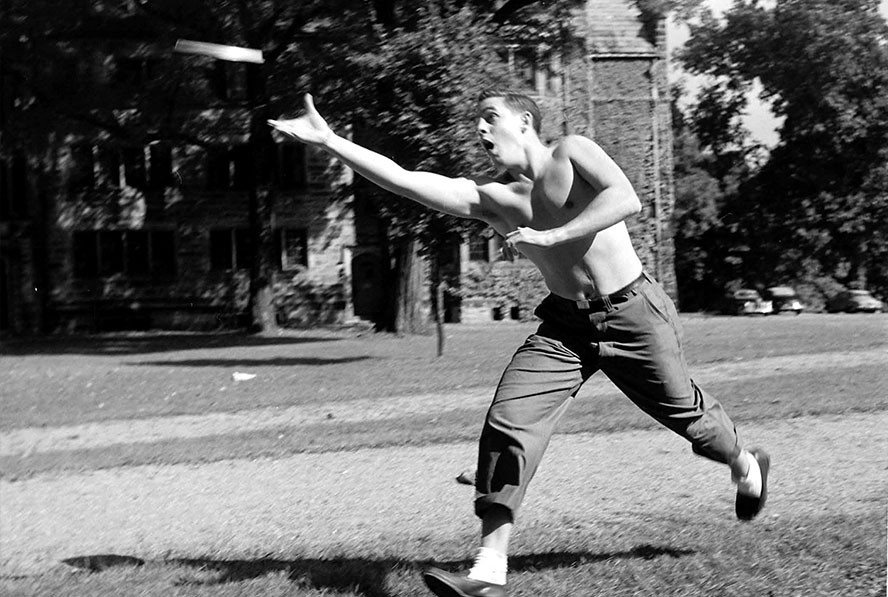Business is Blooming
A conversation with Mailchimp colleagues Michael Mitchell '03 and Lain Shakespeare '05.
Read The StoryCelebrating Kenyon pride, one decade (or two) at a time.

In September 1950, documentary photographer Eliot Elisofon came to Kenyon to capture life on campus for a LIFE Magazine special issue on American education. While in Gambier, Elisofon gave an exclusive interview to the Collegian in which he expressed a controversial opinion about Old Kenyon. “In his suave international manner he explained from behind his ‘English’ glasses how the College should have been glad to get rid of the ‘monster’ when it burned,” the newspaper reported. “This exceedingly well-informed dignitary thought it was a cardinal sin to have rebuilt what has been the symbol of Kenyon since the early eighteen hundreds.” Still, the photographer caught some iconic moments on film of students throwing frisbees near the building.
During WWII, 984 Kenyon men served in the U.S. armed forces including: 395 in the Army, 330 in the Navy, 194 in the Army Air Corps, and 32 in the Marine Corps.
Bombing of Hiroshima and Nagasaki ended WWII and the UN was established.
4 a.m. on Feb. 27, a night watchman and several students almost simultaneously discovered a fire raging in the halls of Old Kenyon. By the time the fire was brought under control later that day, the College had suffered the worst disaster in its history and nine students had lost their lives.
Bebop, R&B, boogie-woogie and rock ‘n’ roll are all new to the scene in the 1950s.
Poet Robert Frost is the guest of honor during a three-day conference, “The Poet the guest of honor during a three-day conference, “The Poet and Reality” Oct. 6-8, and gives a speech in Rosse Hall.
"My voice was the first to broadcast from WKCG, Gambier, Ohio, 'the voice of Kenyon College.' WKCG first broadcast in October 1946 from the basement of the Hill Theater, via equipment constructed by returning war veterans." —Ira Elisoph '45
A conversation with Mailchimp colleagues Michael Mitchell '03 and Lain Shakespeare '05.
Read The StoryKenyon alumni and faculty explore how to become better communicators.
Read The StoryThe history of the Village Inn, Gambier's iconic restaurant and gathering place.
Read The Story